Congrats to Will for winning the Steve Furber Medal for Outstanding Doctoral Thesis in Computer Science for his thesis entitled “Disorder- and Strain-Mediated Magnetic Phase Modifications in FeRh Thin Films”
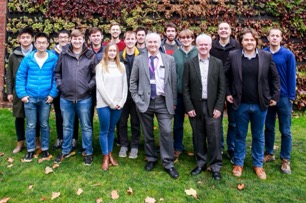
The nano engineering and spintronic technologies (NEST) group focuses on understanding the physical processes and developing the fundamental understanding necessary to create the computational and data storage devices of the future.
Our research includes exploring recent device ideas in non-conventional computing and encompasses a broad range of activities to explore the spin of electrons in nanoscale magnetic structures. The group interacts strongly with the Henry Royce Institute for advanced materials and the National Graphene Institute. We regularly use large scale facilities in the UK and Europe for neutron and X-ray scattering and have wide range of collaborators in the UK and Europe.
In addition to the group's leading edge deposition, device fabrication and characterisation facilities we have full access to the state-of-the-art facilities at the National Graphene Institute and the Royce institute.
MPhys Student Success
Congrats to MPhys students Jaime Leon and Daniel Bangay for winning the 2022 Platt prize in Physics. The prize is awarded to an MPhys graduate(s) for experimental work carried out in the final year of the degree programme. Their project work which was presented (virtually) at the International conference on Magnetism and Magnetic Materials (MMM 2022) in Minneapolis titled “Frequency Tunability with Field-Angle in Hybrid-Anisotropy [CoPd]8-Pd-NiFe Magnetic Multilayers”.
New Paper in Journal of Applied Physics
Congratulations to Harry Waring for the publication of his paper “Exchange stiffness constant determination using multiple-mode FMR perpendicular standing spin waves”, H. J. Waring, Y. Li, N. A. B. Johansson, C. Moutafis, I. J. Vera-Marun, and T. Thomson, in Journal of Applied Physics. You can view the paper online here.
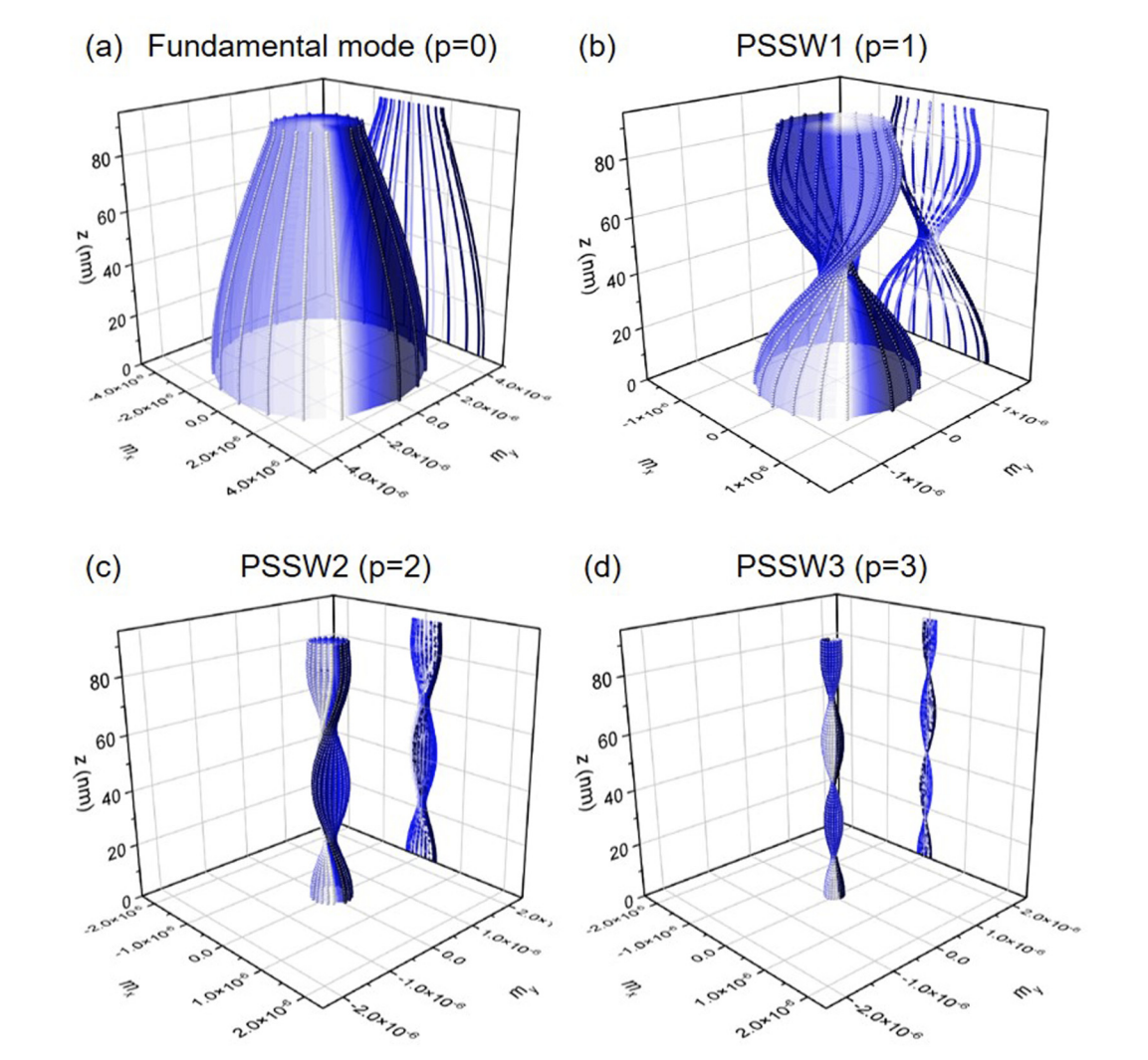
Abstract: The exchange stiffness constant is recognized as one of the fundamental properties of magnetic materials, though its accurate experimental determination remains a particular challenge. In thin films, resonance measurements exploiting perpendicular standing spin waves (PSSWs) are increasingly used to extract this parameter, typically through a determination of the first-order PSSW mode. Here, we present a systematic study of multiple PSSW modes in NiFe films, where both the sample thickness and the cap layer material are varied. The results show that a simple analysis based on the Kittel rigid pinning model yields an exchange stiffness constant that varies with thickness, mode number, and capping layer material. This finding is clearly inconsistent with physical expectation that the exchange stiffness constant of a material is single valued for a particular set of thermodynamic conditions. Using a more general exchange boundary condition, we show, through a comprehensive set of micromagnetic simulations, that a dynamic pinning mechanism originally proposed by Wigen is able to reproduce the experimental results using a single value of Aex. Our findings support the utility of short wavelength, higher order PSSWs to determine the Aex of thin films and show that the value of Aex obtained has a weak dependency on the material immediately adjacent to the magnetic layer.
Bye Charley!
This week we said a sad farewell to Charley after six years (PhD student and RA) in the group. We had a group lunch to say our farewells. Good luck Charley in your new career.
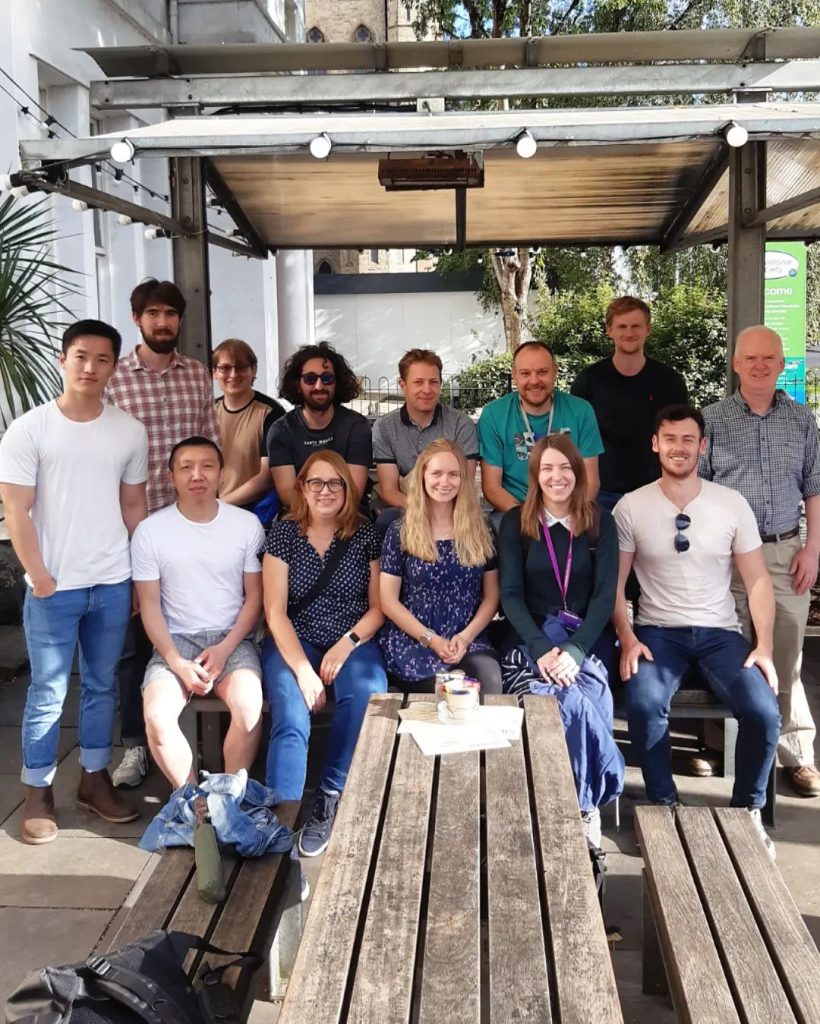
New Paper in Advanced Functional Materials
We are collaborators on a paper titled “Remotely Actuated Magnetic Nanocarpets for Bone Tissue Engineering: Non-invasive Modulation of Mechanosensitive Ion Channels for Enhanced Osteogenesis” by A. R. Unnithan, A. R. K. Sasikala, B. K. Shrestha, A. Lincoln, T. Thomson, A. J. El Haj. You can view the paper online here.
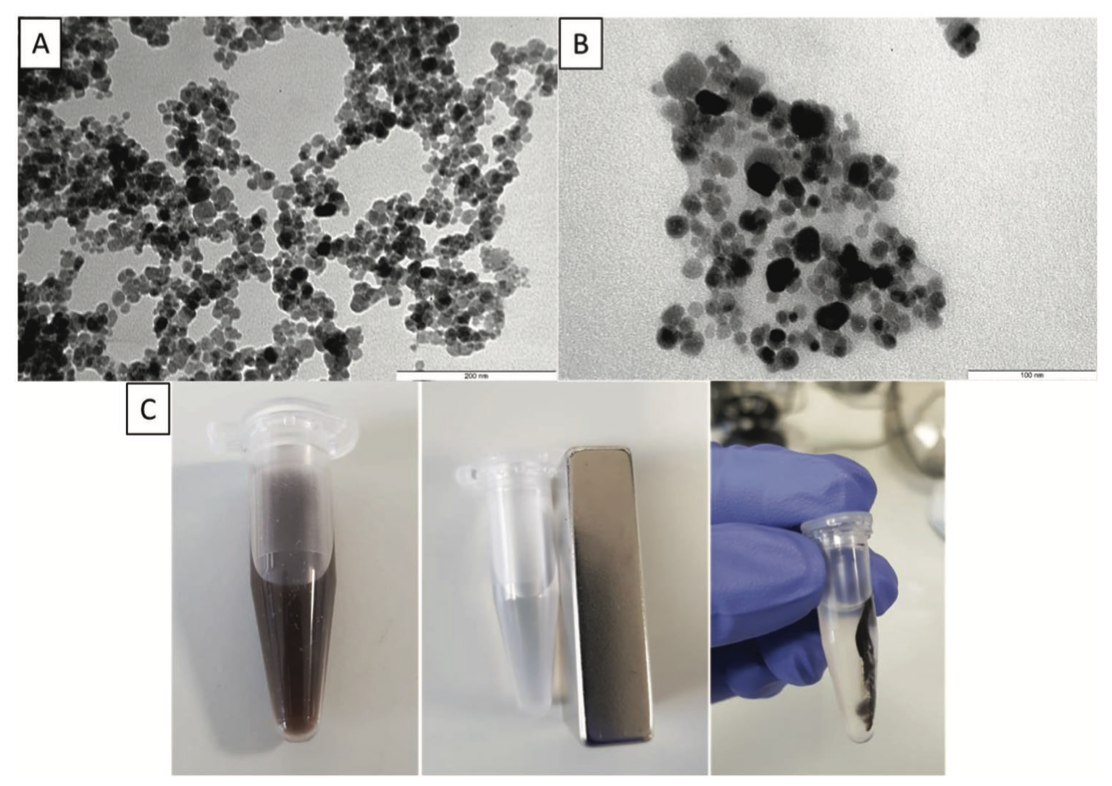
Abstract: Non-invasive approaches using remotely controllable nanomaterials have demonstrated their potential ability to enhance treatment efficacy in regen- erative medicine and tissue repair. Although magnetic nanoparticles (MNPs) have been used for multiple healthcare applications where their remote control properties can show significant advances, enhanced surface functional groups, and electrical properties would expand their capabilities. To address this, in this study, MNPs incorporated Graphene Oxide (GO) based nanocomposites (GOMNPs) are developed and functionalized with TREK1 and Piezo1 antibodies to specifically target the respective mechanosensitive ion channels. Magnetic ion channel activation (MICA) technology is used to remotely activate MG63 osteoblast-like cells tagged with these functionalized GOMNPs. Remote activation of mechanotransduction pathways shows significant upregulation in osteogenic gene expression as well as enhanced alkaline phosphate activity and calcium mineralization with enhanced bone formation. The development of a GOMNP composite has extensive applicability for future clinical translation.
New Research Paper in Nature Scientific Reports
Congratulations to Michael Grimes who has had his latest research published in Nature Scientific Reports: “Determination of sub-ps lattice dynamics in FeRh thin films” by M. Grimes, H. Ueda, D. Ozerov, F. Pressacco, S. Parchenko, A. Apseros, M. Scholz, Y. Kubota, T. Togashi, Y. Tanaka, L. Heyderman, T. Thomson and V. Scagnoli. You can view the paper online here.
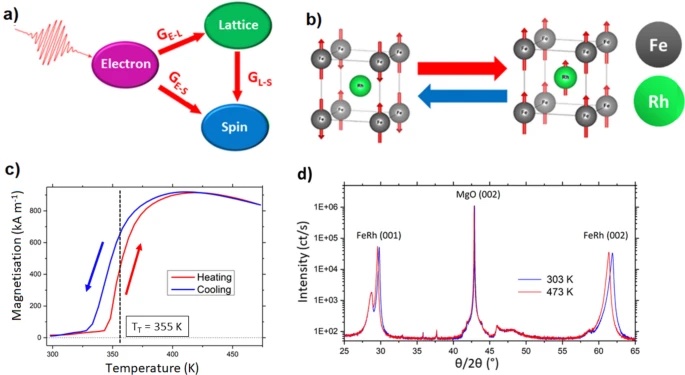
Abstract: Understanding the ultrashort time scale structural dynamics of the FeRh metamagnetic phase transition is a key element in developing a complete explanation of the mechanism driving the evolution from an antiferromagnetic to ferromagnetic state. Using an X-ray free electron laser we determine, with sub-ps time resolution, the time evolution of the (–101) lattice diffraction peak following excitation using a 35 fs laser pulse. The dynamics at higher laser fluence indicates the existence of a transient lattice state distinct from the high temperature ferromagnetic phase. By extracting the lattice temperature and comparing it with values obtained in a quasi-static diffraction measurement, we estimate the electron–phonon coupling in FeRh thin films as a function of laser excitation fluence. A model is presented which demonstrates that the transient state is paramagnetic and can be reached by a subset of the phonon bands. A complete description of the FeRh structural dynamics requires consideration of coupling strength variation across the phonon frequencies.
Graduation Success!
It’s great to see research students from the group graduating. Well done to Harry Waring, Charley Bull and Will Griggs for graduating!
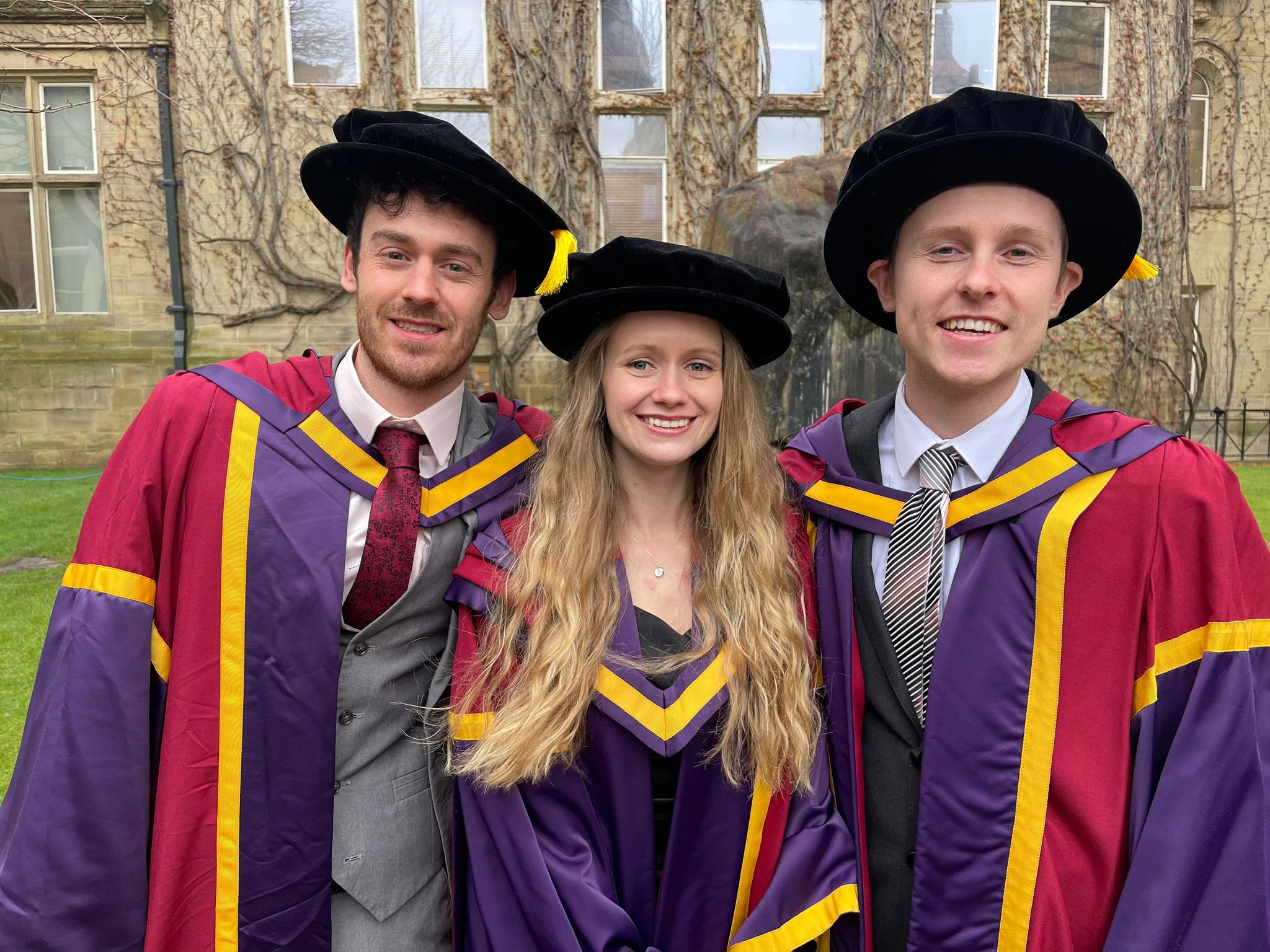
New Research Paper in AIP Advances
Well done to Michale Grimes for having his latest research published in AIP Advances: “X-ray investigation of long-range antiferromagnetic ordering in FeRh” by M. Grimes, N. Gurung, H. Ueda, D. G. Porter, B. Pedrini, L. J. Heyderman, T. Thomson, and V. Scagnol. You can view the paper online here.
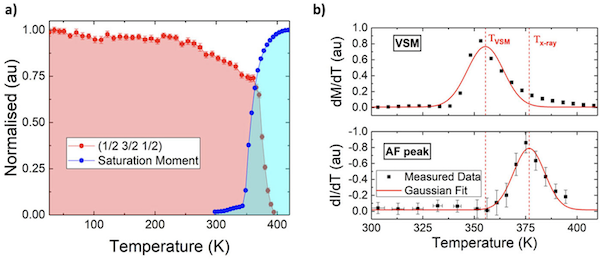
Abstract: We demonstrate a probe of long-range antiferromagnetic (AF) order in FeRh thin films using non-resonant magnetic x-ray scattering. In particular, x-rays at energies below the Fe K-edge have been used for the observation of magnetic Bragg peaks. Due to the low efficiency of the magnetic scattering, a grazing incidence geometry was used to optimise the diffracted intensity from the thin film samples. Based on Scherrer analysis, we estimate a coherence length similar to previous reports from x-ray magnetic linear dichroism (XMLD) experiments, indicating that domain sizes are limited to 40 nm which is consistent with the grain size. The temperature dependent behaviour of the AF order shows an inverse correlation with the emergence of the ferromagnetic (FM) moment, as expected from the phase diagram.
Magnetism 2022
It was great to be able to attend a face-to-face conference for the first time in a while as the group members descended on York to attend Magnetism 2022, which took place at the University of York on 28th-29th March. We have staff and students presenting talks and displaying posters. We all enjoyed the conference dinner on the evening of the 28th!
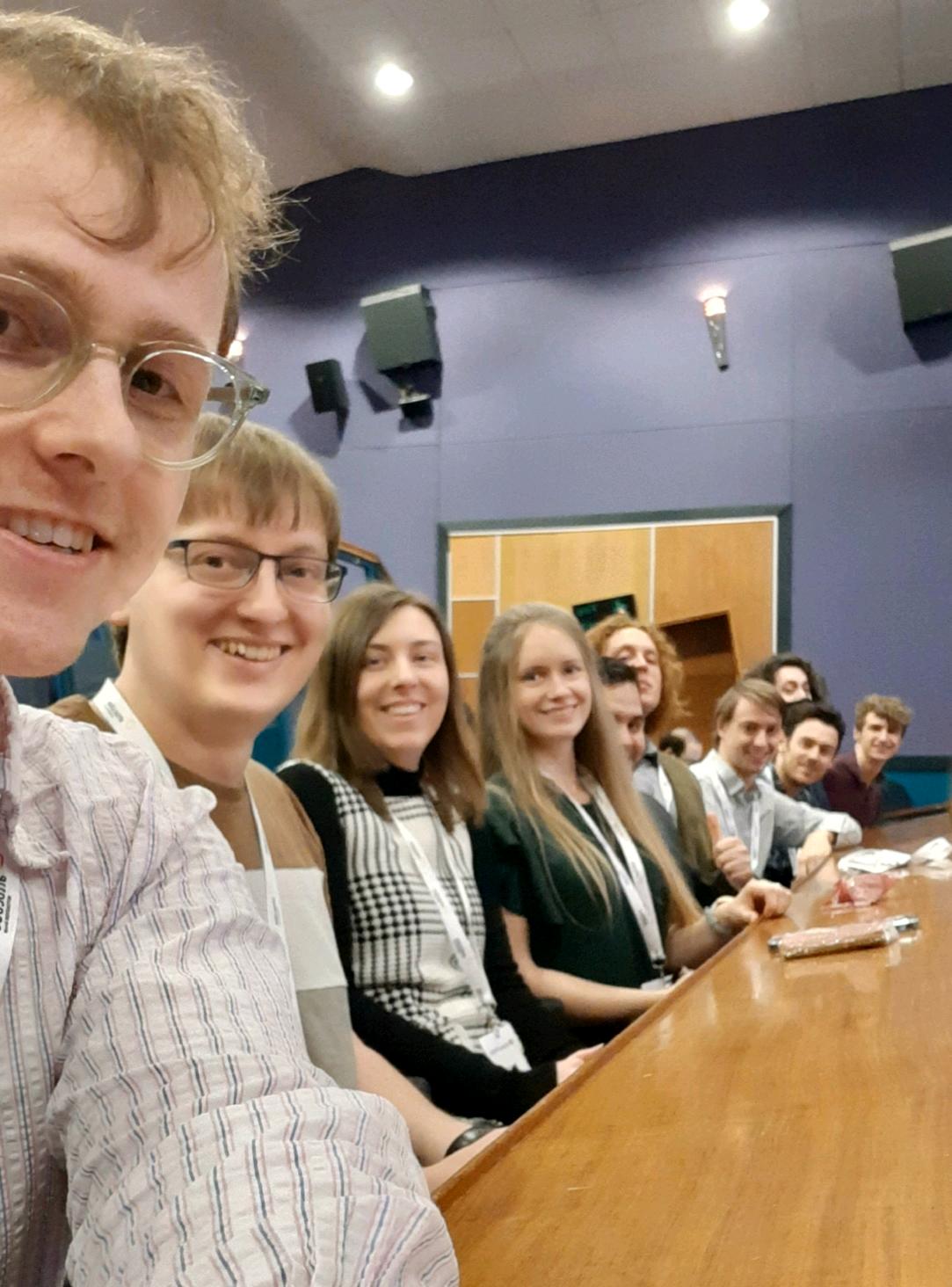
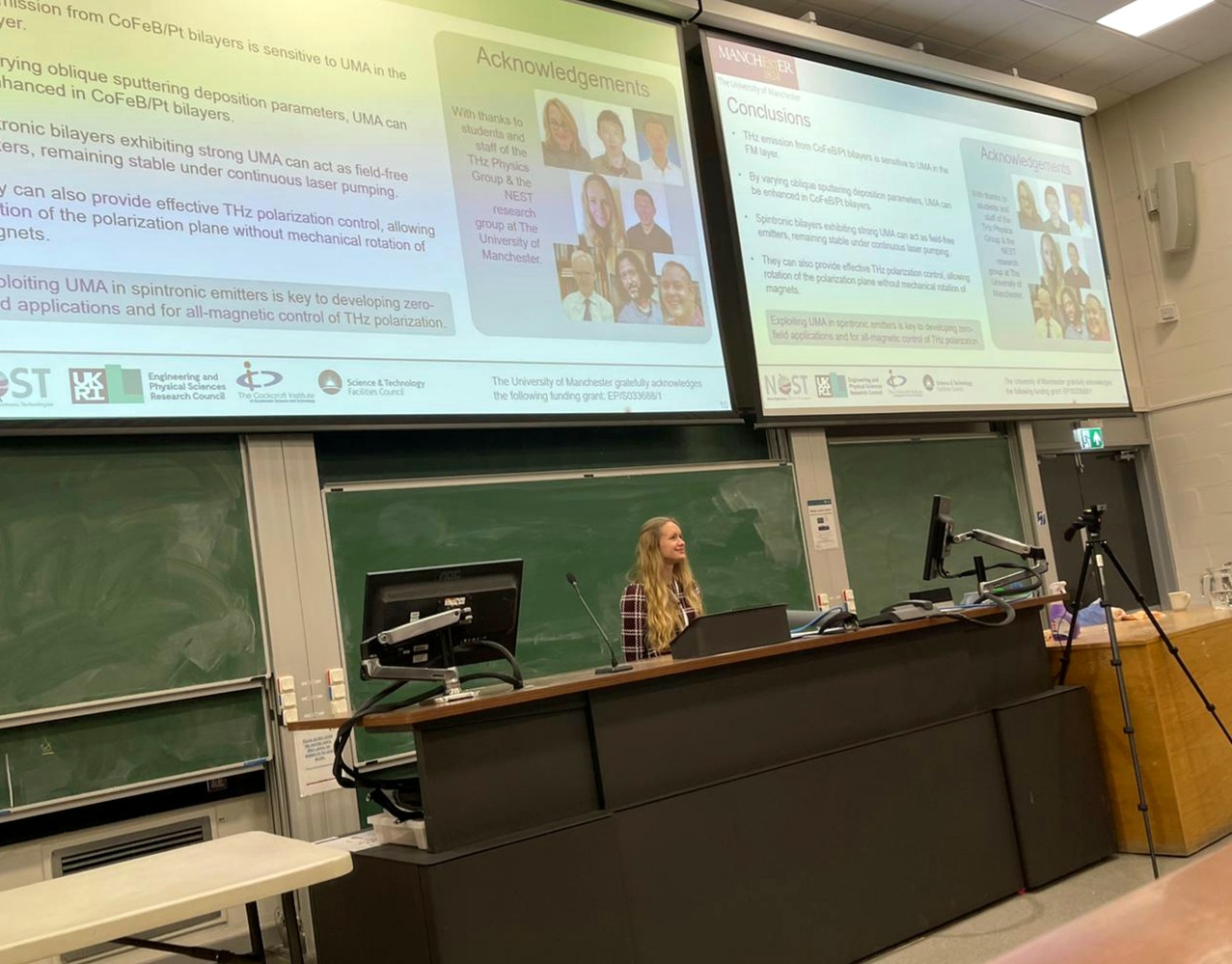
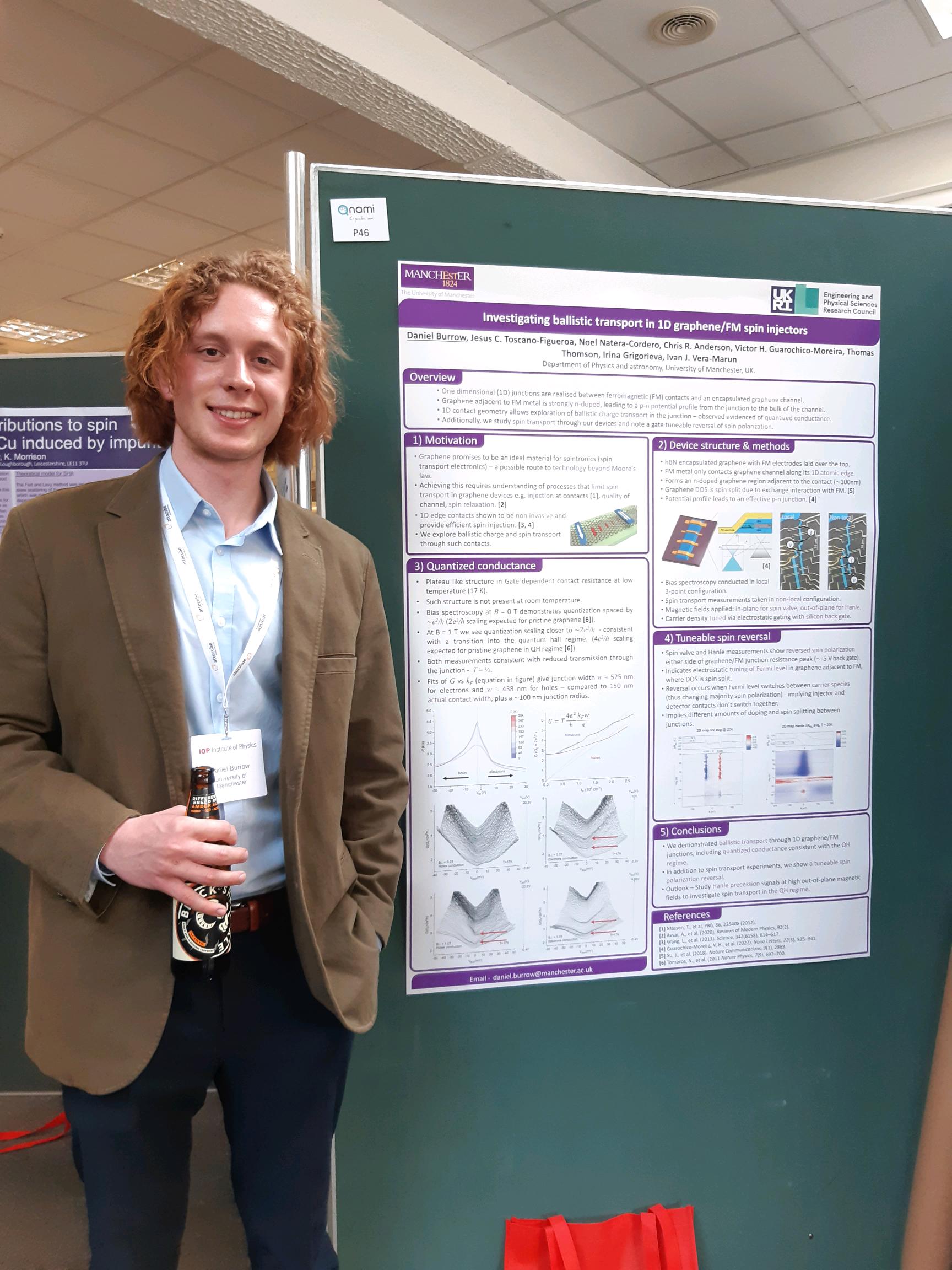
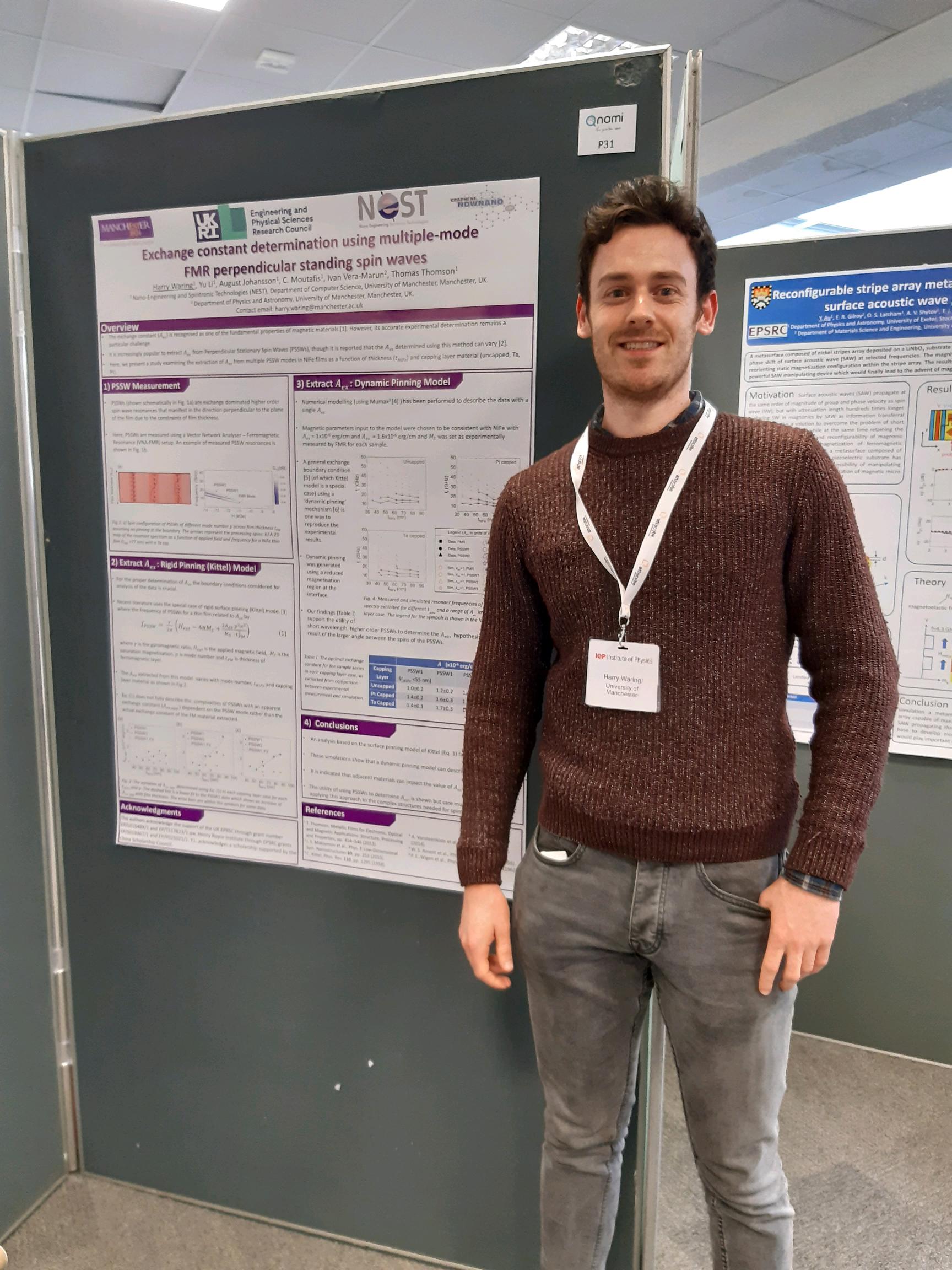
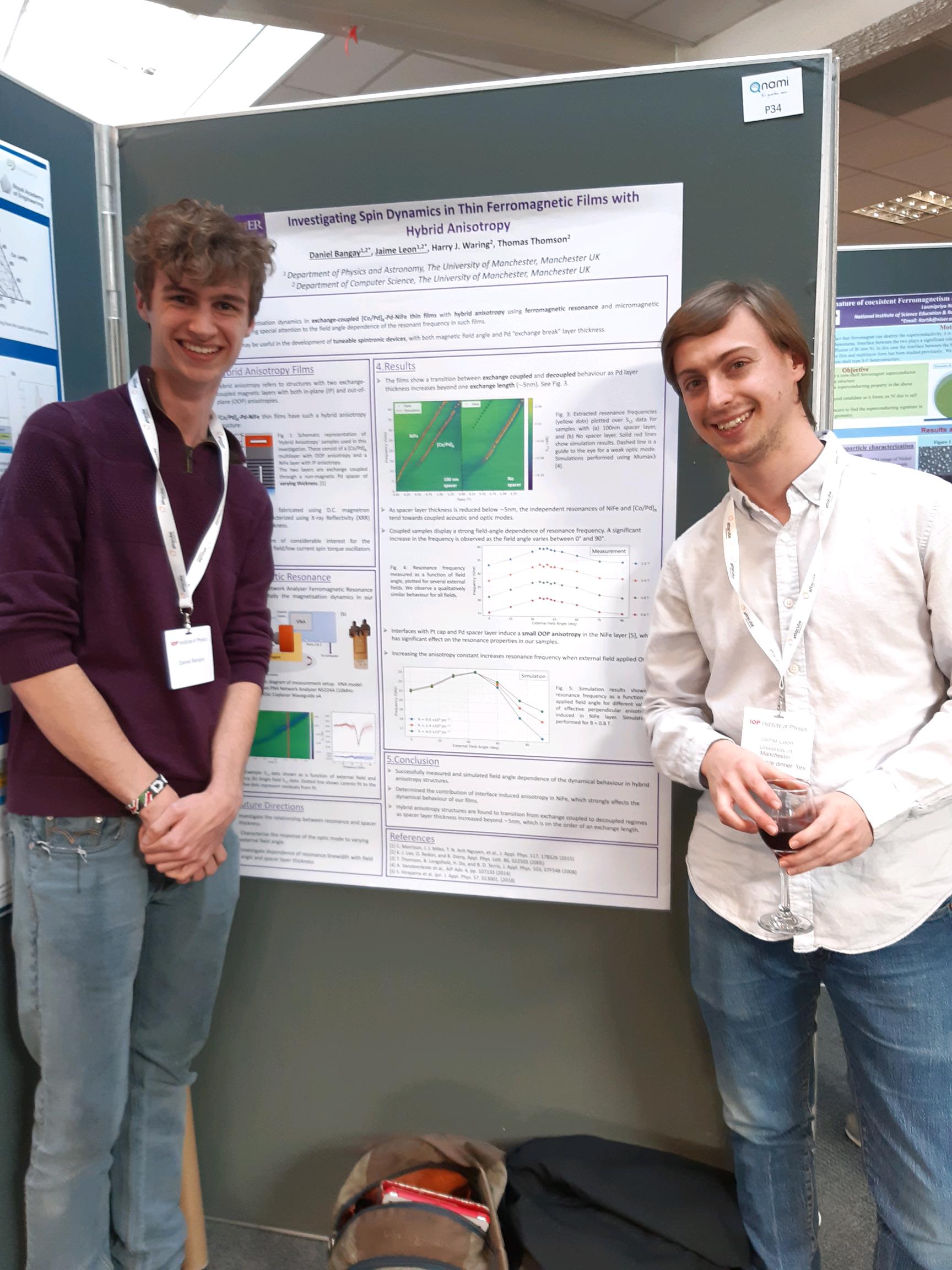
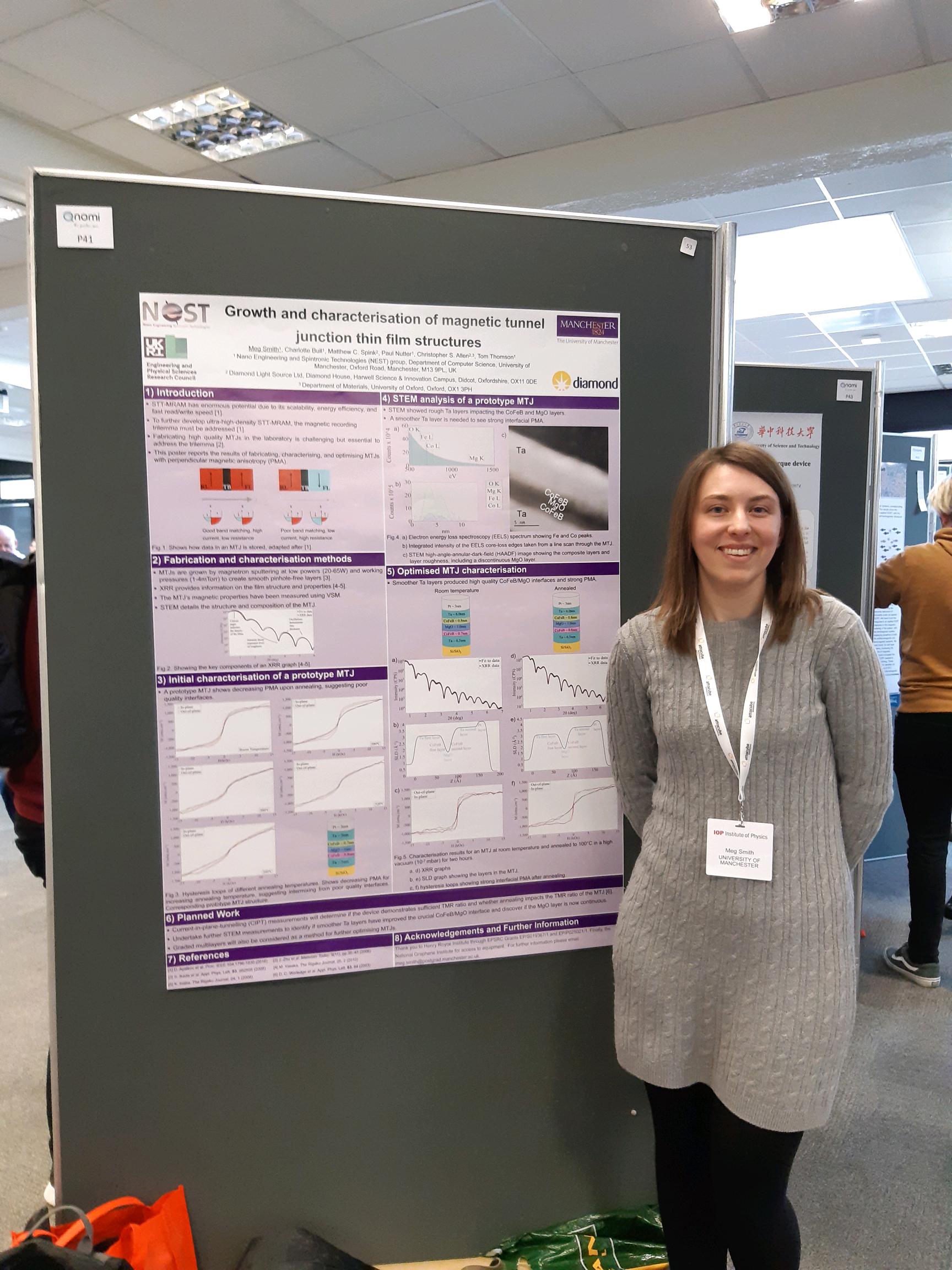
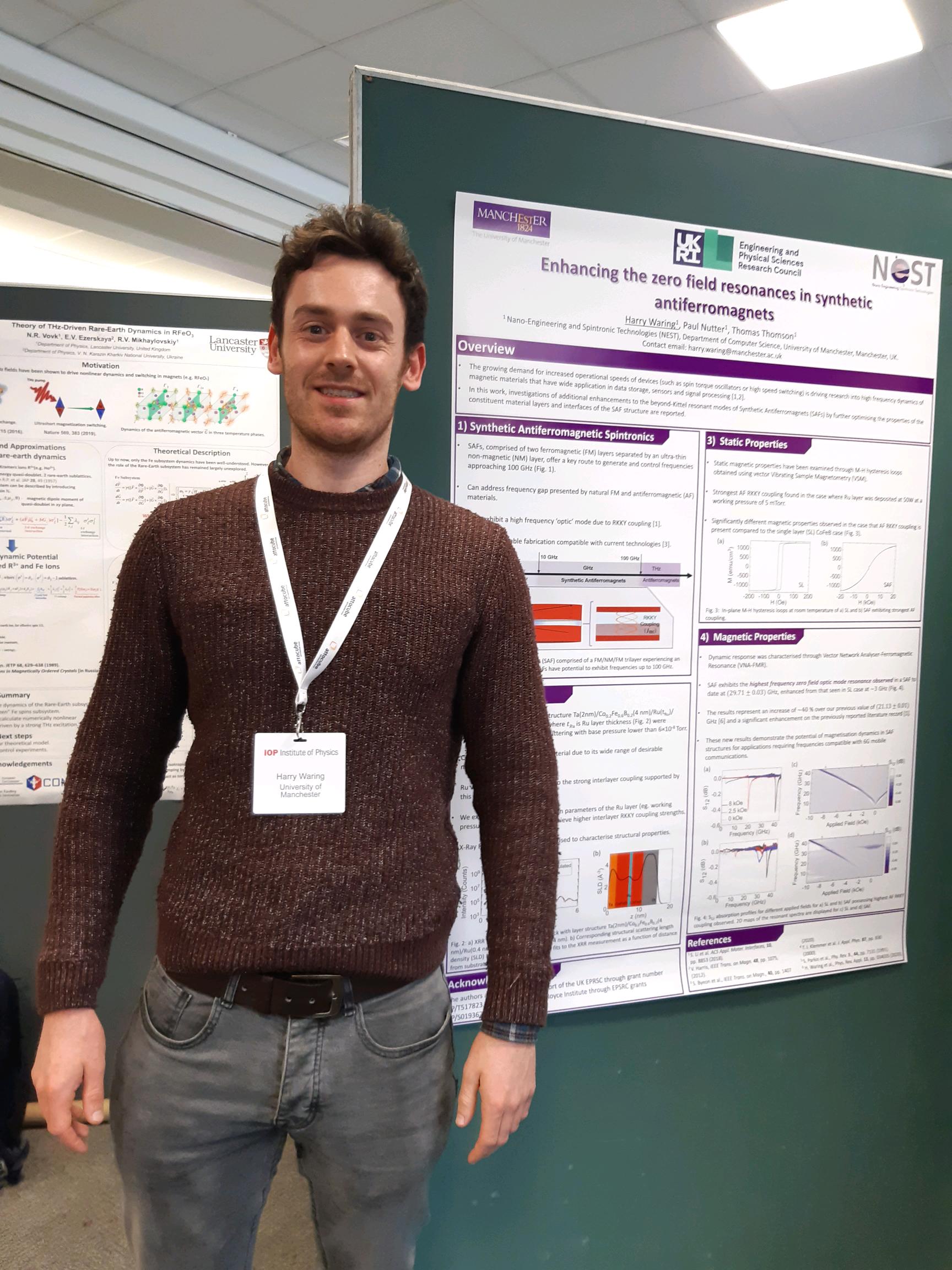
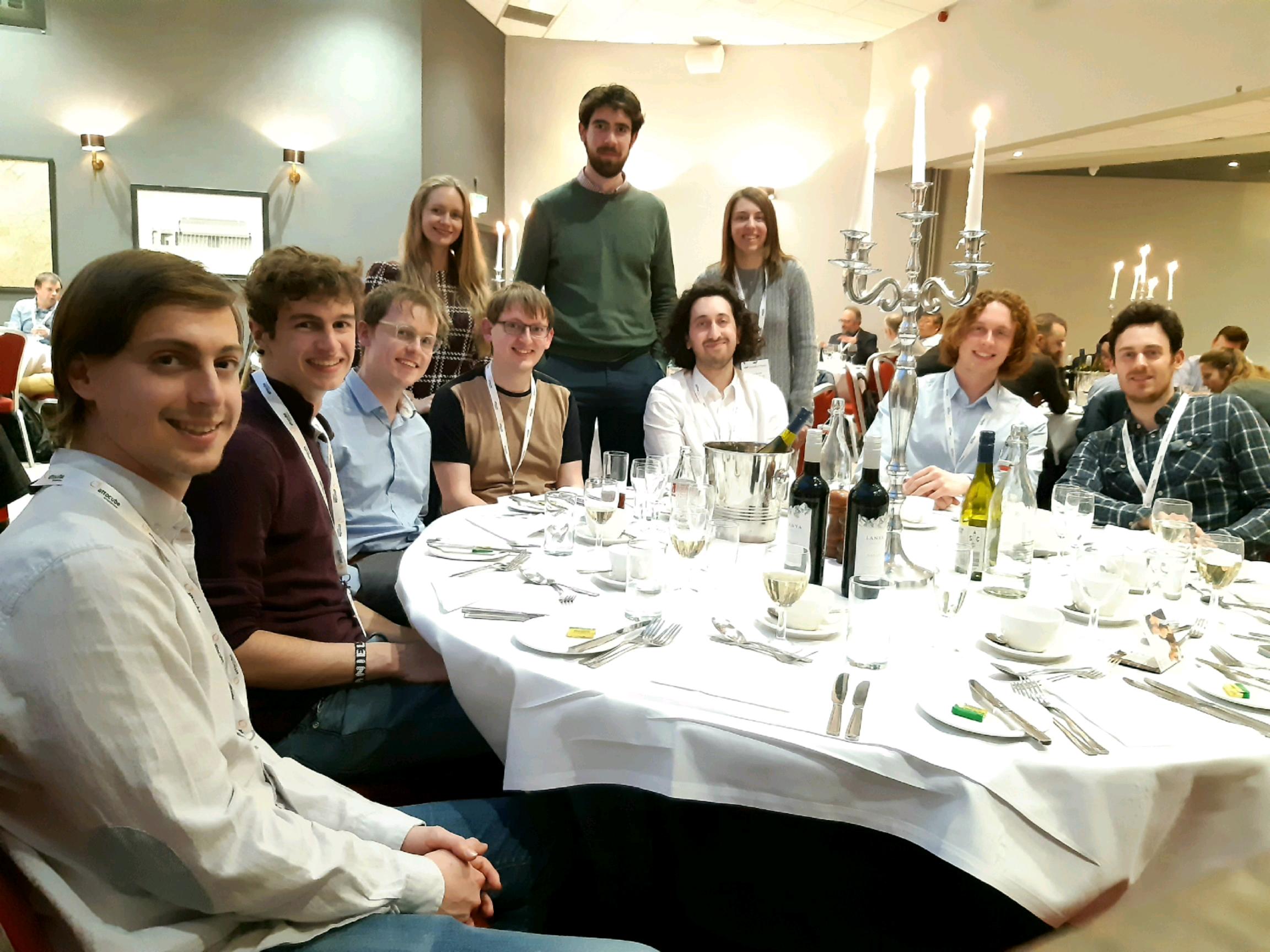
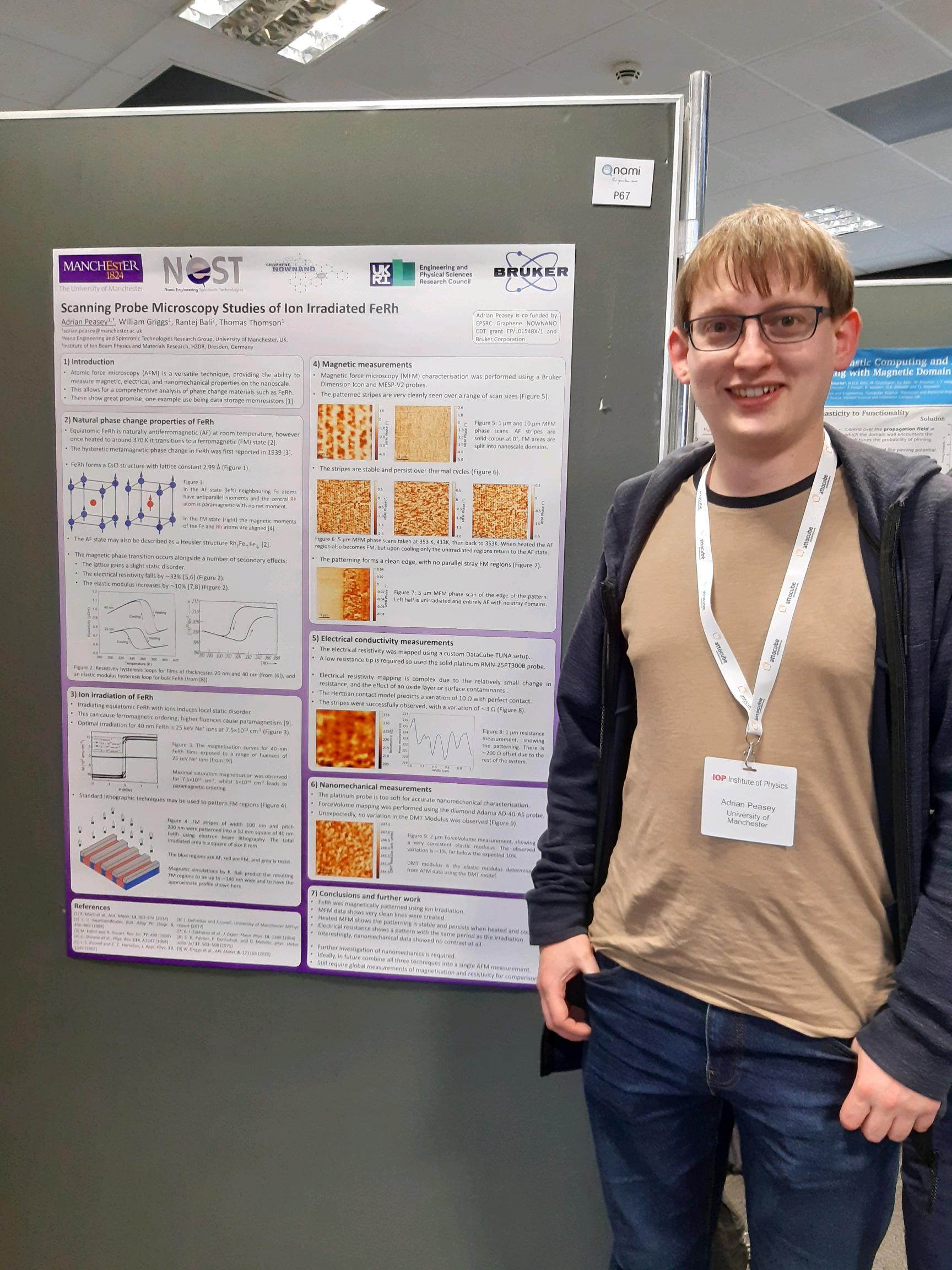
New Paper in Nature Scientific Reports
We have had a research paper “Repeatable and deterministic all electrical switching in a mixed phase artificial multiferroic” by W. Griggs, and T. Thomson, published in Nature Scientific Reports. You can view the paper online here.
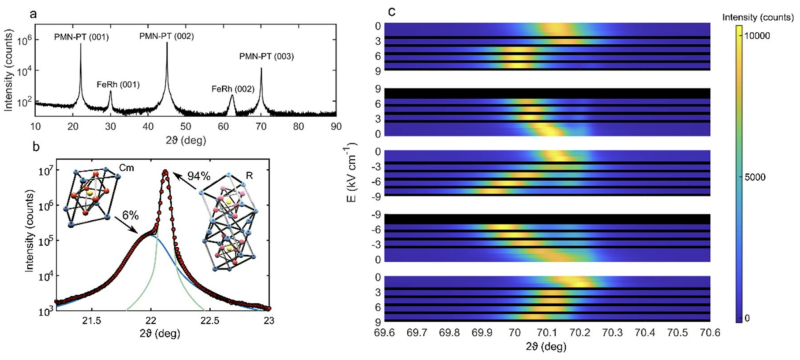
Abstract: We demonstrate a repeatable all-electric magnetic switching behaviour in a PMN-PT/FeRh thin film artificial multiferroic. The magnitude of the effect is significantly smaller than expected from conventional thermomagnetic switching of FeRh thin films and we explore properties of the PMN-PT/FeRh system in order to understand the origin of this reduction. The data demonstrate the importance of the crystallographic phase of PMN-PT and show how a phase transition at ~ 100 °C modifies the magneto-electric coupling. We demonstrate a large strain remanence effect in the PMN-PT substrate, which limits the magnetoelectric coupling on successive cycling of the applied electric field..
